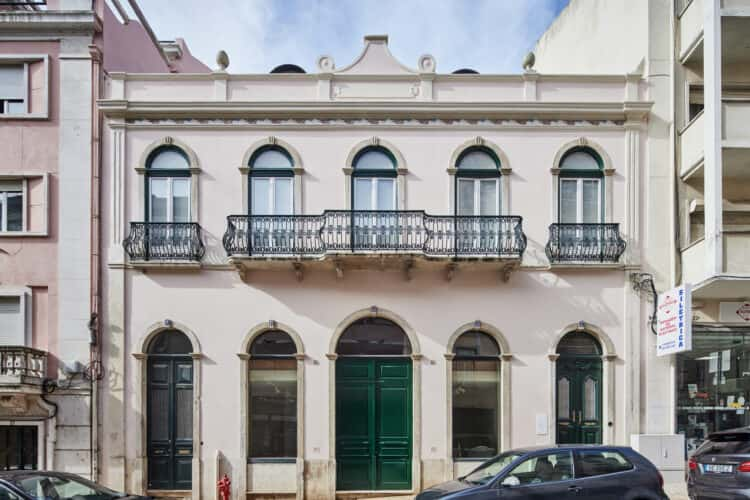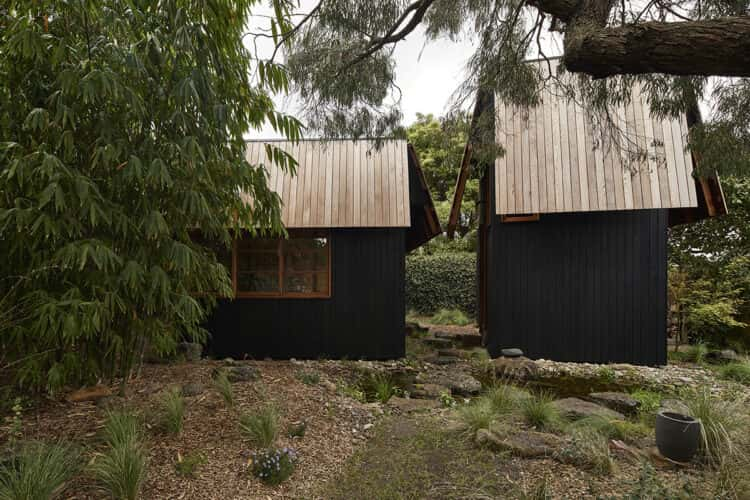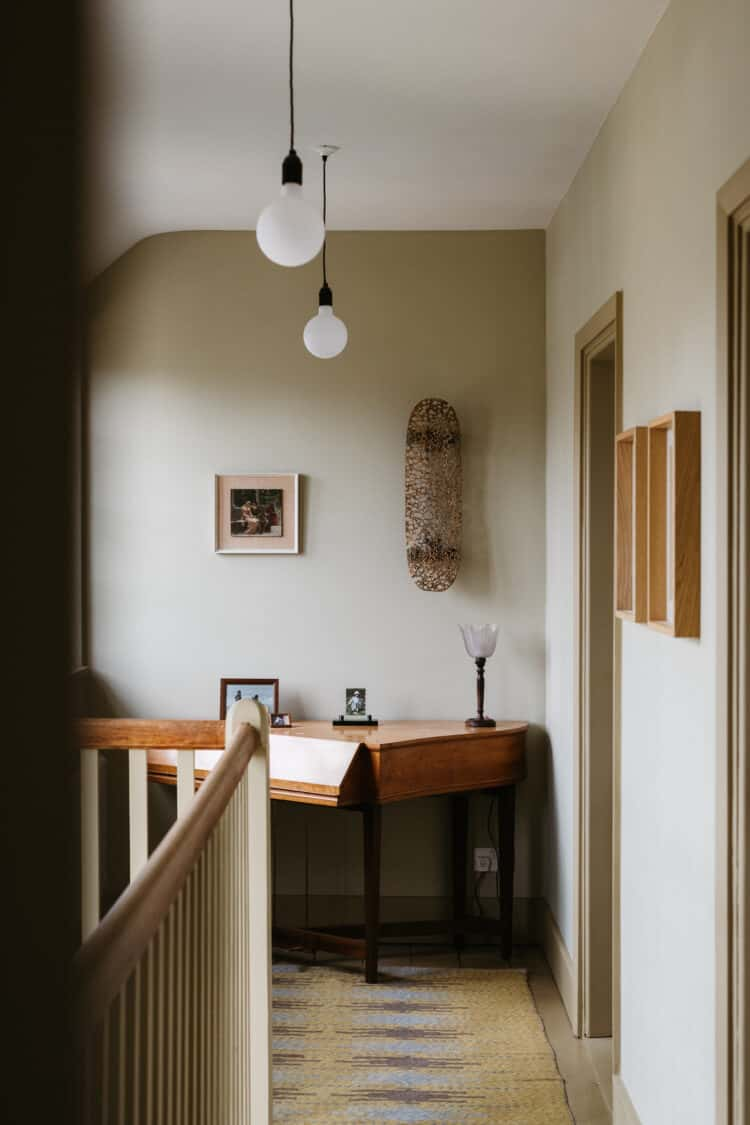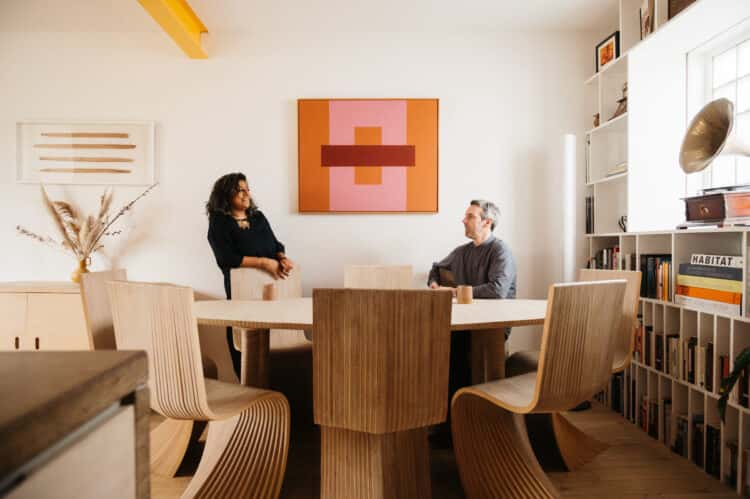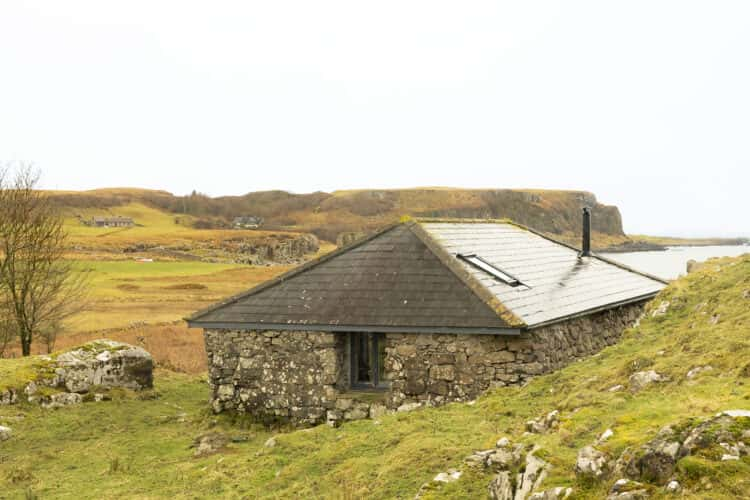The trials and triumphs of a tropical-inspired new-build in Bristol
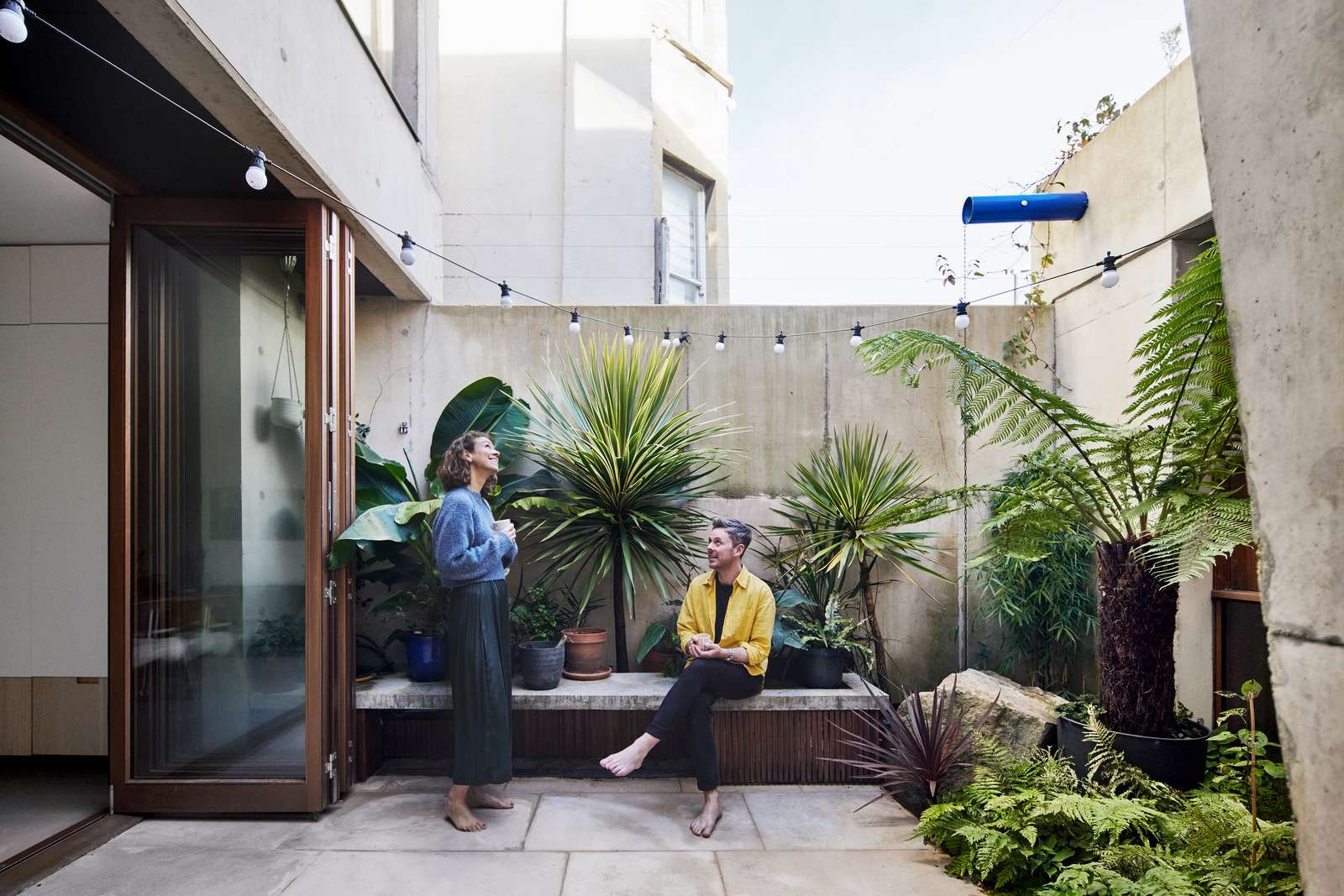
Words Grace McCloud
Photography Dan Glasser
In 2019, Mathew and Ami were living in Bristol, having moved from London in search of more space. Yet to find the perfect spot to settle, their thoughts turned to self-building and the chance it would offer them to create something extraordinary in the city they loved. For Mathew, a trained architect who now works for a developer, it was a dream commission.
Instead of trawling the internet, the couple took a more hands-on approach, walking around different areas of the city in the hope of spotting a space they could build on. It worked: having found a disused plot in Montpelier, negotiated on it and bought it, they broke ground in early 2020.
Smooth sailing soon turned to choppier waters. The pandemic took hold. Their builder went bust. Mathew and Ami found themselves pouring concrete and cutting insulation panels themselves on dark evenings after work. Ultimately, however, no challenge was insurmountable to this clearly plucky pair – and their tenacity paid off. The house they created, informed in part by tropical modernism and their travels in Sri Lanka, is indeed extraordinary – referential, materially focused and entirely individual. Having just put it on the market, Mathew and Ami talk to us about their highs, lows and lasting memories of their experience of creating an oasis of a home in which “it always feels just a little bit sunnier”.
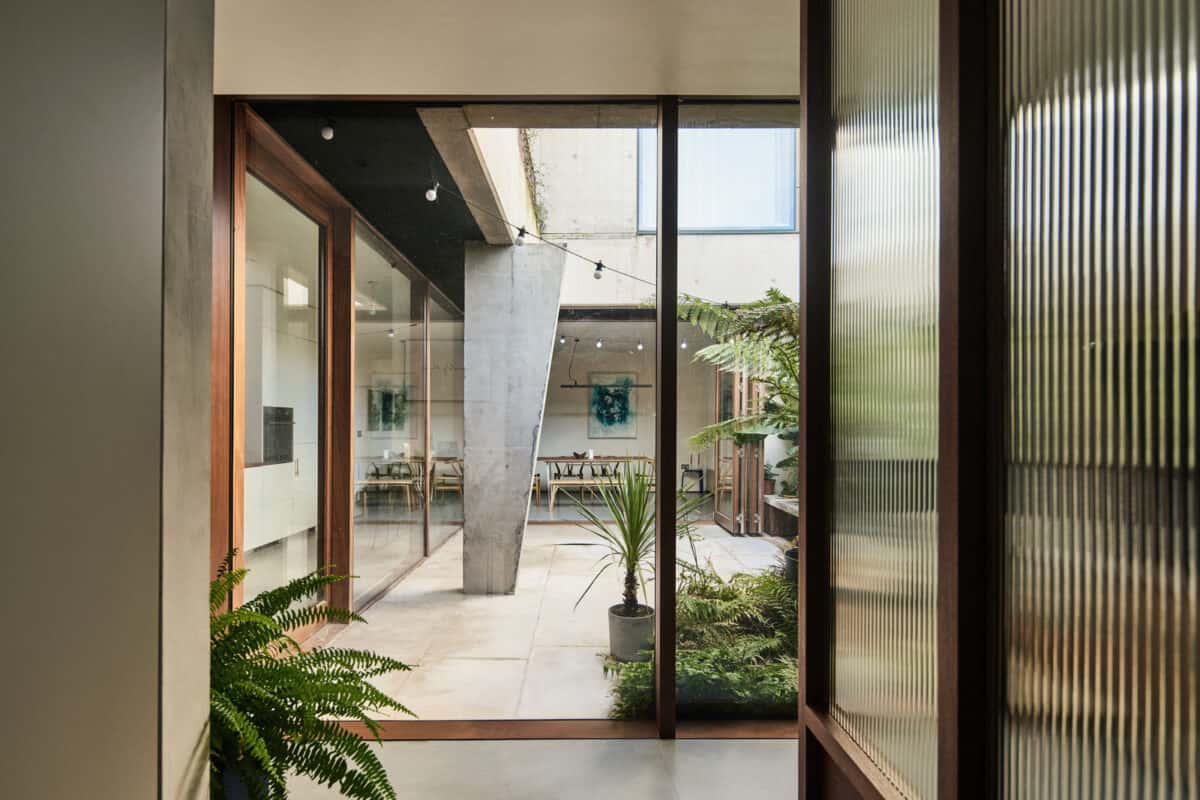
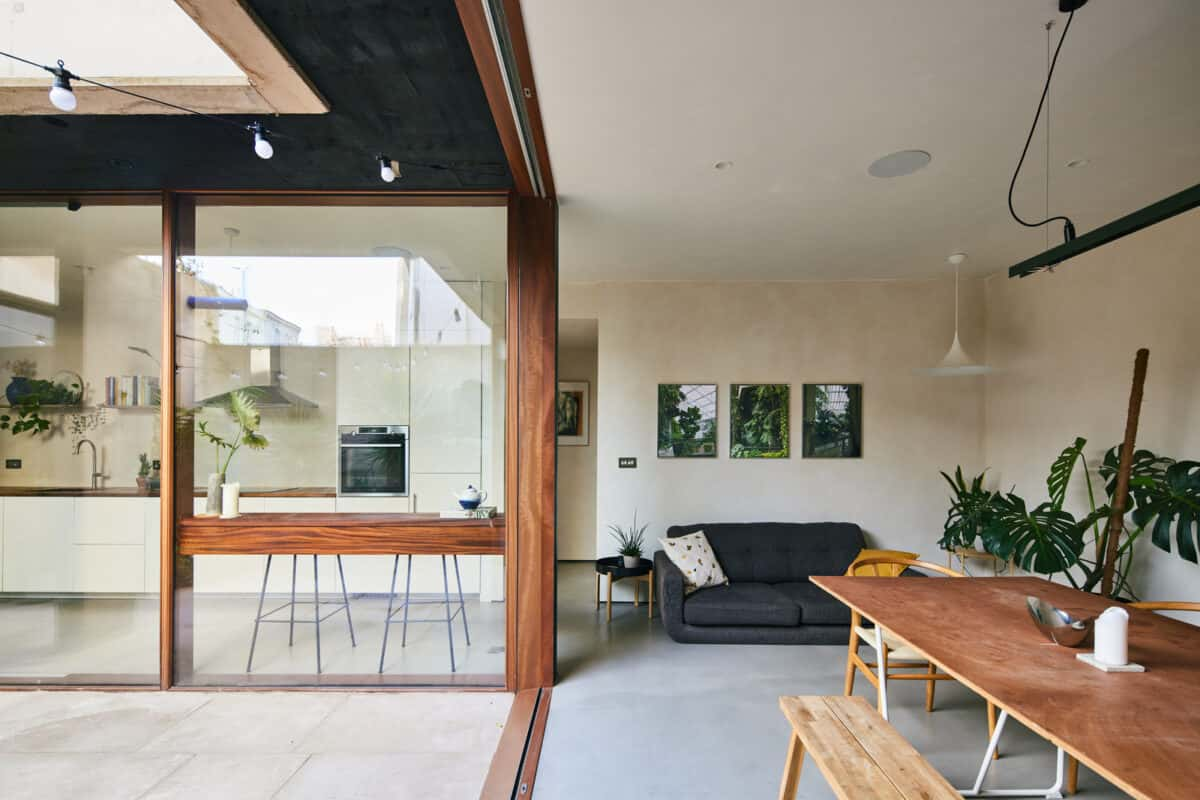
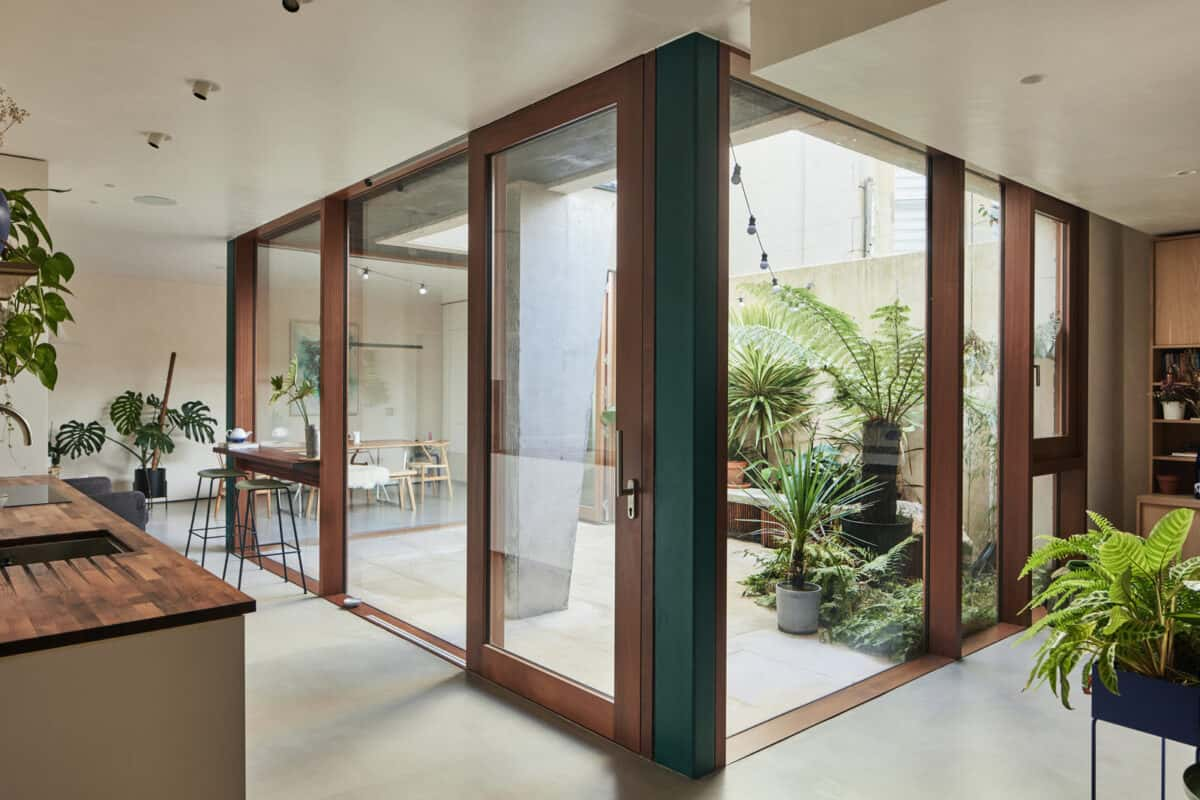
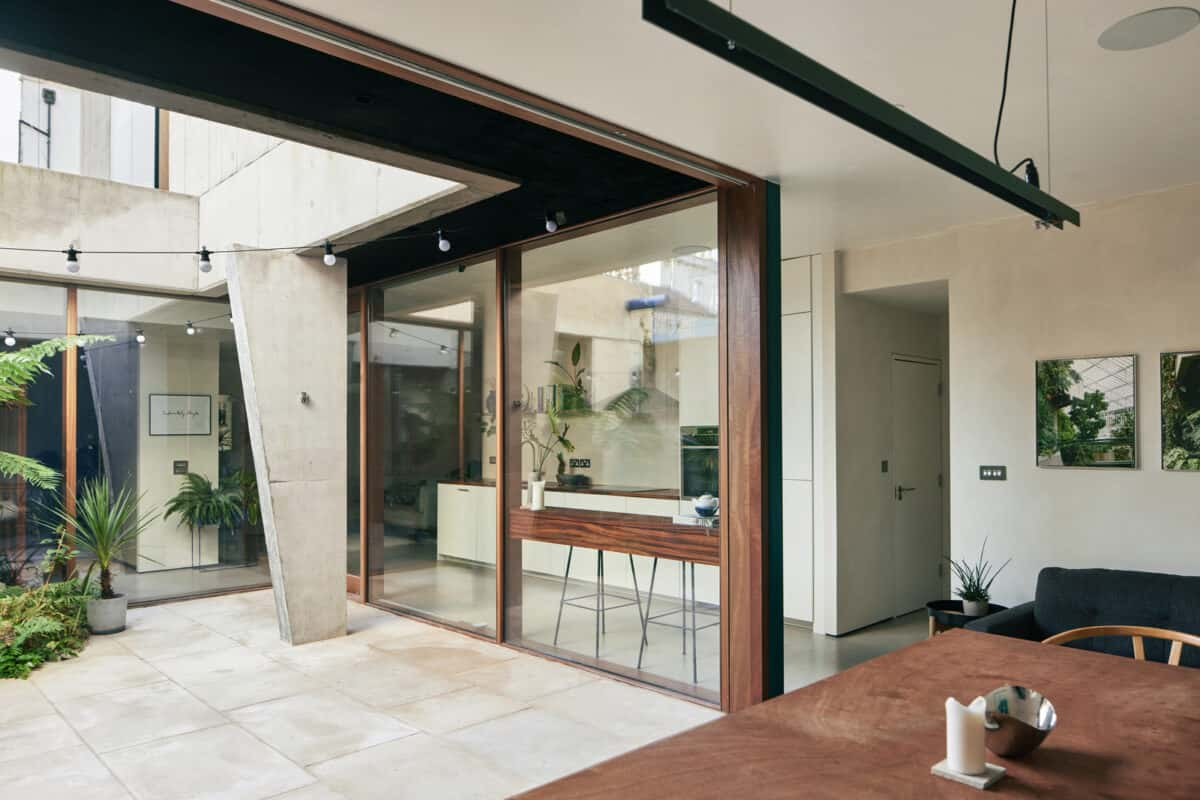
Mathew: “When we first started looking for a plot, I remembered one of my former bosses, a developer, telling me that his best purchases had always been random bits of land he’d found while out and about. That really gave us the impetus to start searching in the way we did. After work or at weekends, we’d head out together to parts of Bristol we didn’t know so well to see what we could find.”
Ami: “Not long after we started, we came across this spot. It used to form one end of a garden belonging to house on a parallel street. The owners clearly weren’t using it – it was filled with rubble and rubbish – so we knocked on their door and asked if they’d consider selling it. Though said they might, we didn’t hear from them for six months.”
Mathew: “I was a bit gutted they hadn’t got back to us; hitherto, my experience of Bristol was that everybody was just unbelievably friendly and neighbourly! I’d almost given up hope that they’d respond. Then, one night when we were on holiday in Sri Lanka, we got an email saying they were keen. Bristol’s true colours had shown themselves – and my boss’s advice had worked.”
Ami: “The project was a huge learning curve for me, as I’d never done anything like this before – I work in digital marketing. But I think it was a learning curve for Mathew too. While he’d run a practice in London and had done projects for family and friends, it’s quite different doing it for yourself. Plus, it was a complex build, involving lots of concrete and glass and using perhaps more unusual elements, such as poured board-marked concrete.”
Mathew: “I had a bit of an obsession with concrete at the time, which I needed work through! That’s why we leaned so heavily on it as a material. But we also sought to introduce a more tropical aesthetic to things – not the kind of thing you see every day in the south-west. You can see the influence of Sri Lanka and the work of Geoffrey Bawa there in the sapele wood we used, for instance, and in the courtyard garden at the centre of the plan, which is all Amy’s doing. The idea was to create a home in which it always feels just a little bit sunnier.
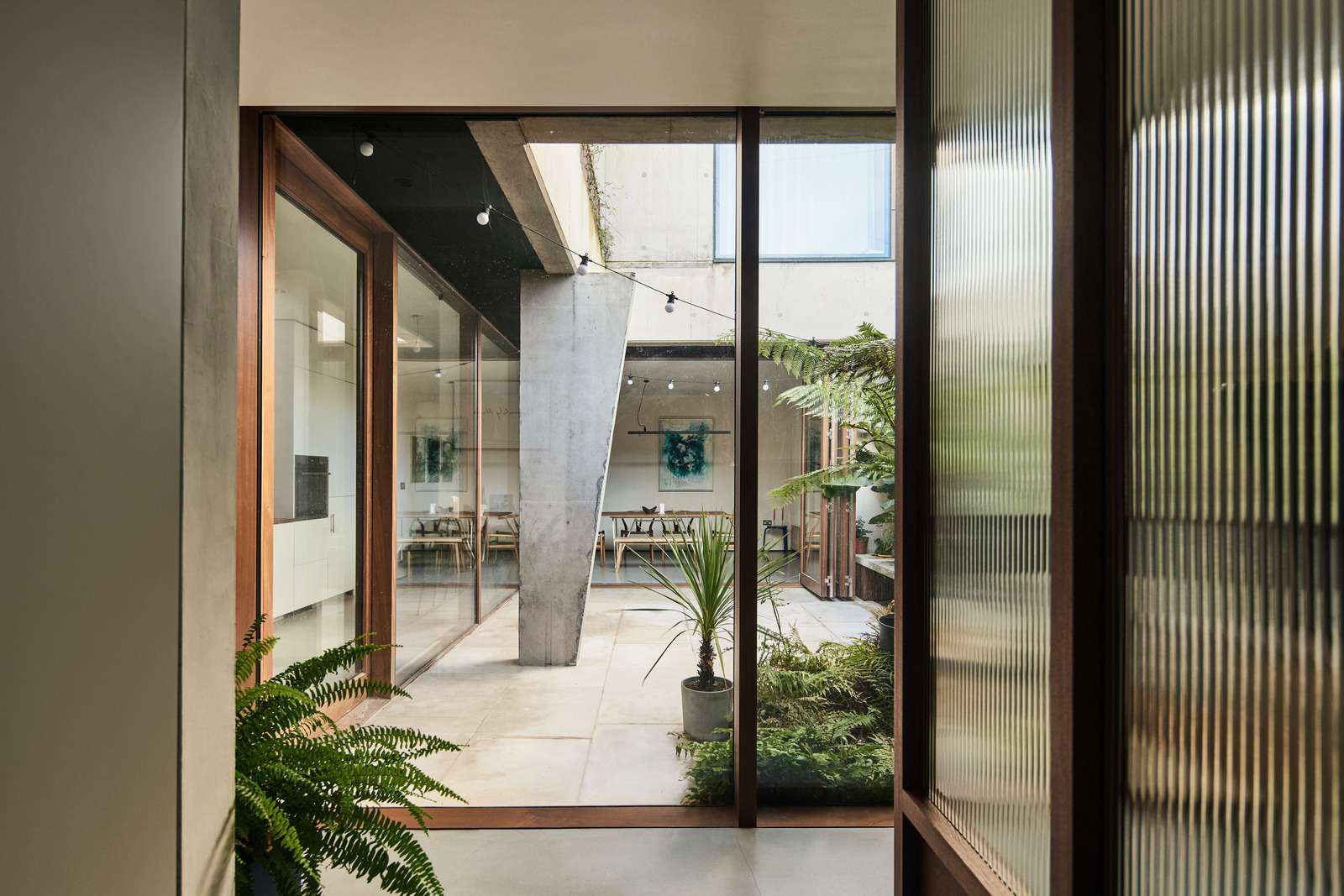
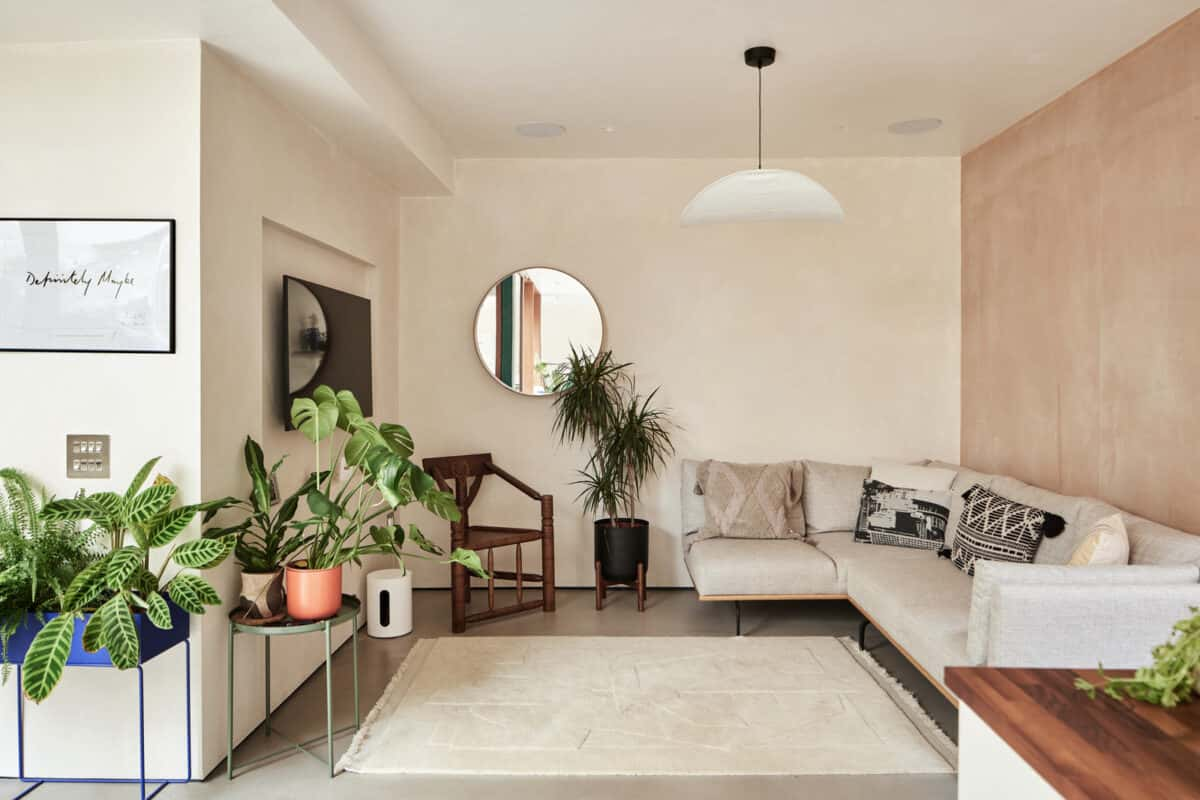
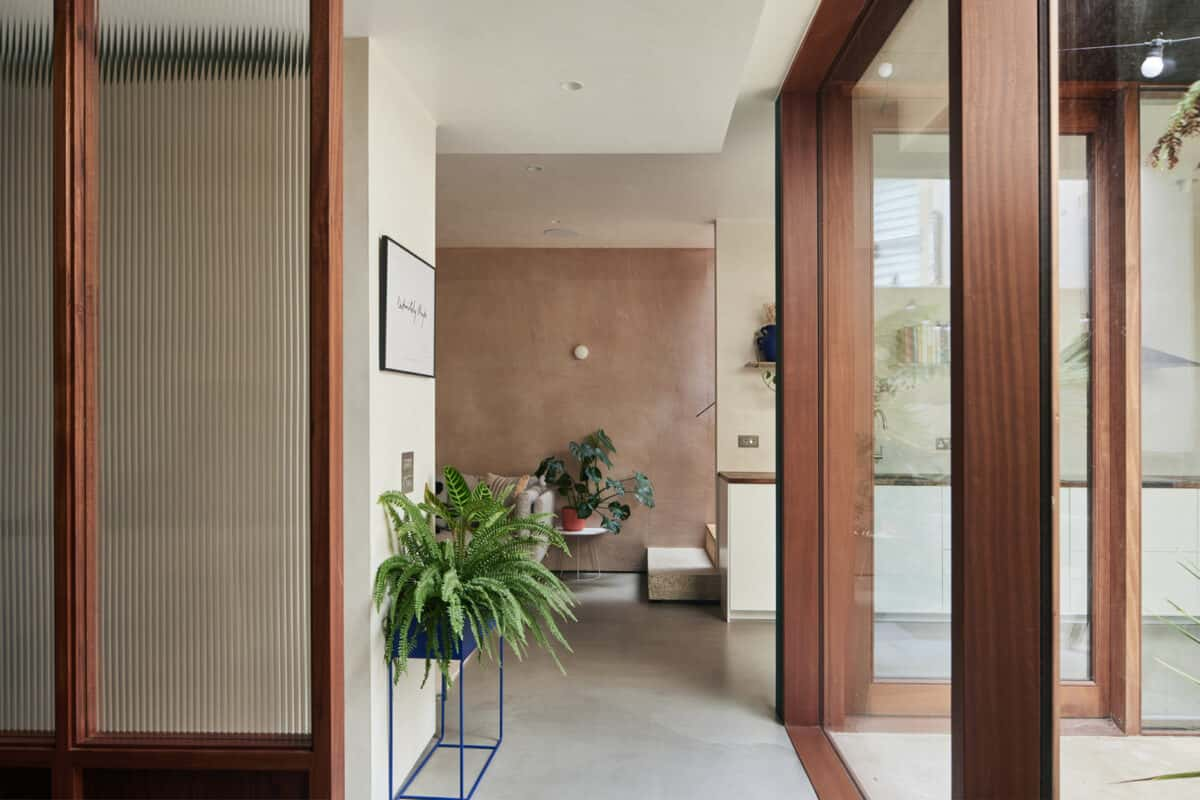
“Given we were building in the middle of a pandemic, things didn’t go too badly. I mean, things could have gone better! But they could have been a lot worse too. We had a couple of two-week site shutdowns due to Covid, but we got by. The main hiccup was when our contractor went bust…”
Ami: “That was stressful!”
Mathew: “Luckily, he had completed the concrete and had put in the roof deck and floor joists, so we had the main structure and things were more or less manageable. But it sucked!”
Ami: “Suddenly we found ourselves doing everything – and learning on the job. We enlisted help from local trades to help us finish the build, but laid our underfloor heating pipes and poured the concrete sinks and steps ourselves.”
Mathew: “We spent winter evenings in the dark and cold cutting insulation into joist slots… Anything we could do, we did.”
Ami: “Having to do so much ourselves had huge benefits too. Not only did it mean we had more control, it also meant we felt much more connected to the house – and more in control. We knew exactly what was happening and when.”
Mathew: “As the project architect, that was brilliant. I felt so in tune with the house. And, looking back, given how complex the project was and how many obstacles we faced, I’m pretty impressed we were only on site for 18 months, start to finish.
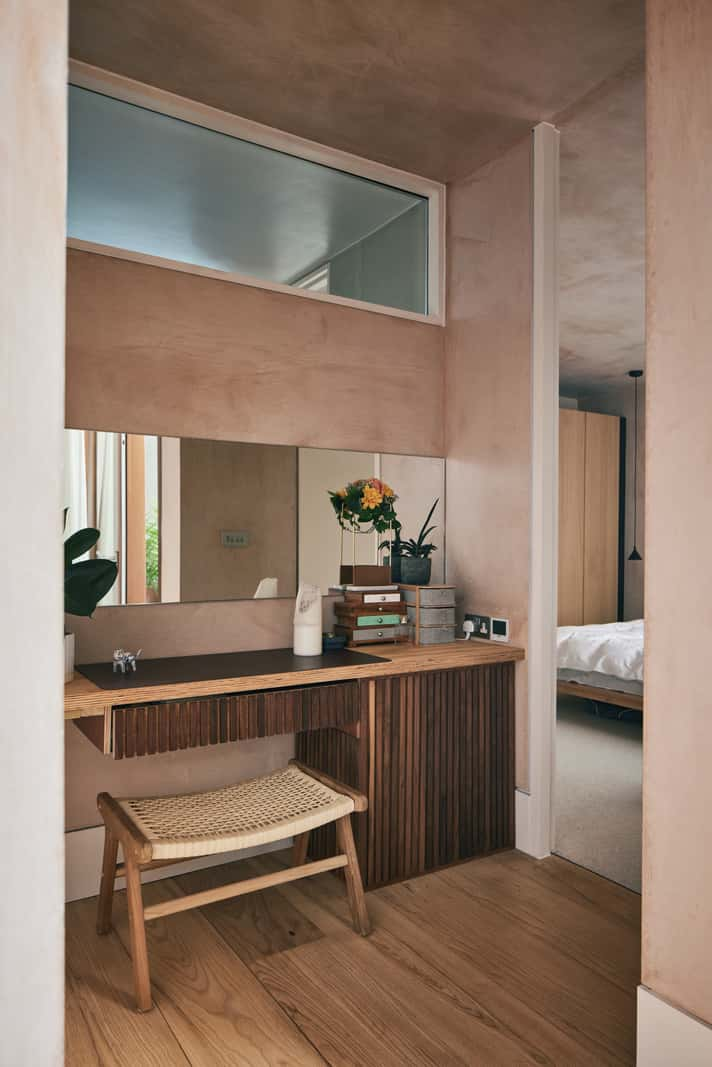
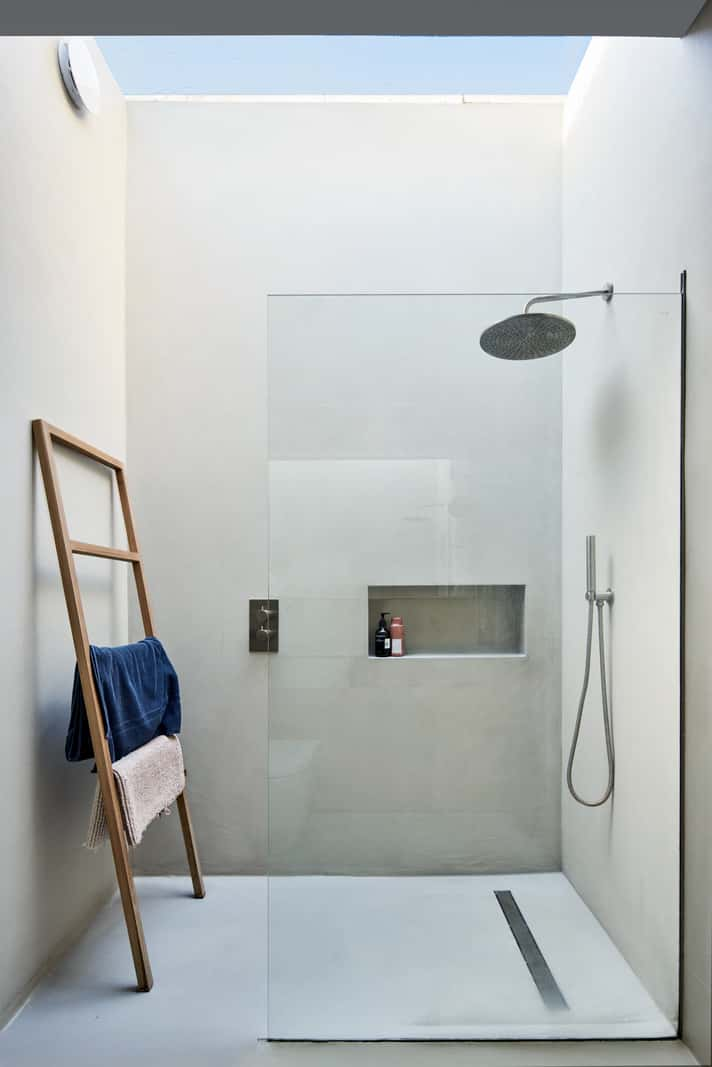
“I’m still pretty obsessed by that concrete, it turns out. There is such a nice solidity to this house and it has a real warmth to it – helped by the underfloor heating. We installed it upstairs, but we never really turn it on – there’s no need. And the house performs really well. We tried our best in that regard: there’s no gas on site and everything is powered by air-source heat pump. We did want to put solar panels on the roof too, but our budget got the better of us. There’s still provision up there to install them at a later date.
“I love how different the house looks and yet it feels perfectly at home on the street. Strangely, there’s lots of architectural variation on this road – it’s a real patchwork – and I love that we’ve added to the tapestry.”
Ami: “The street itself is wonderful. There’s a real community vibe in Montpelier and there’s always a lot going on – this house is an oasis right in the middle of it. I love it best when the doors are open downstairs, the plants are interacting with the wood and glass, and the dining room and courtyard become one. It feels so private and peaceful.”
Mathew: “The thing I’m most proud of is very small. The stairs leading to the first floor start with a beautiful concrete step, under which we’ve recessed some lighting so it glows. Ami and I cast it together one evening. We were tired, stressed, stretched, mixing concrete when we shouldn’t have been mixing concrete – and we made this wonderful thing, a real symbol of how far we’d come. I think it’s one of the best elements in the house – and it’s only going to get better with age.”
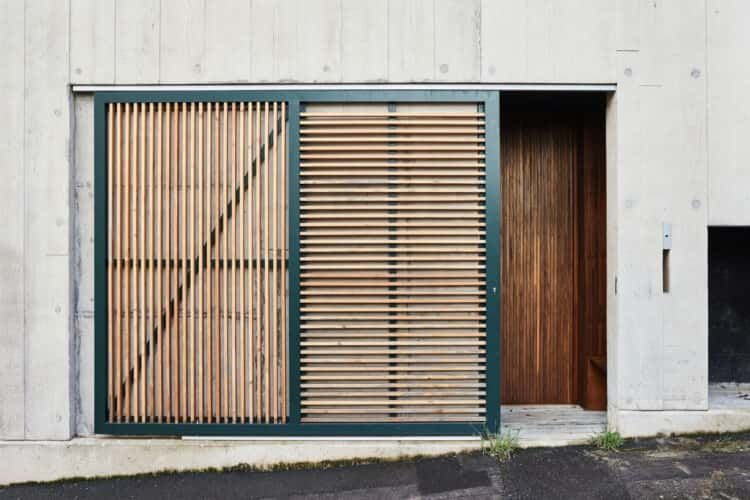
RELATED ON THE MODERN HOUSE
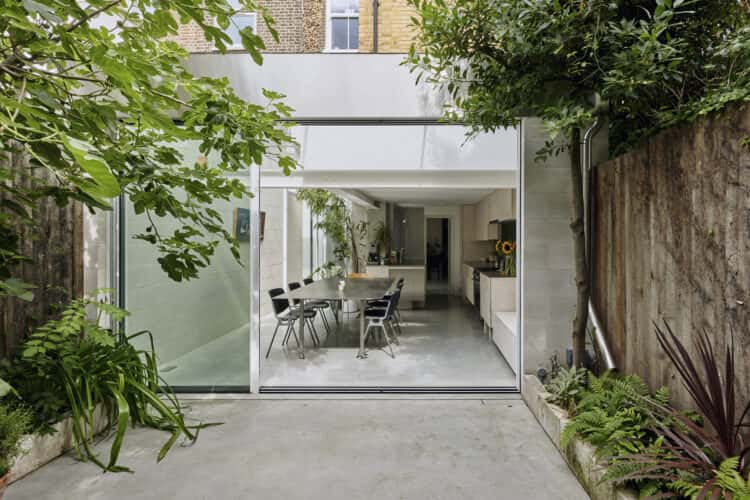
A lower-ground floor flat that glows from within
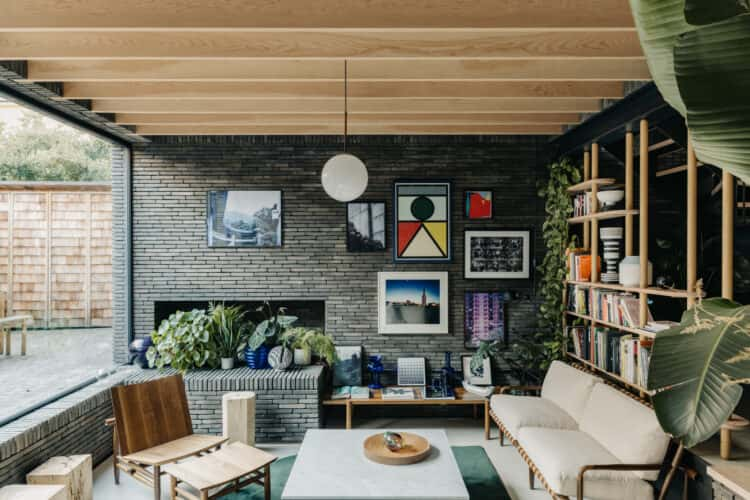
Introducing our Hackney team
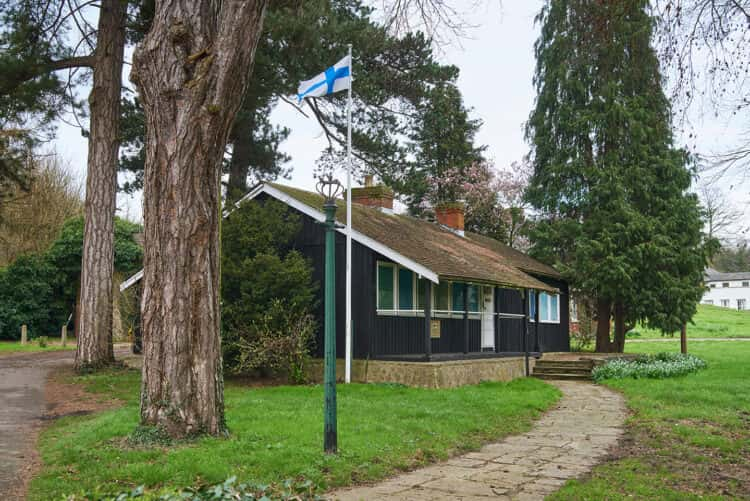
Hot Stuff: the extraordinary story of the Cobdown sauna
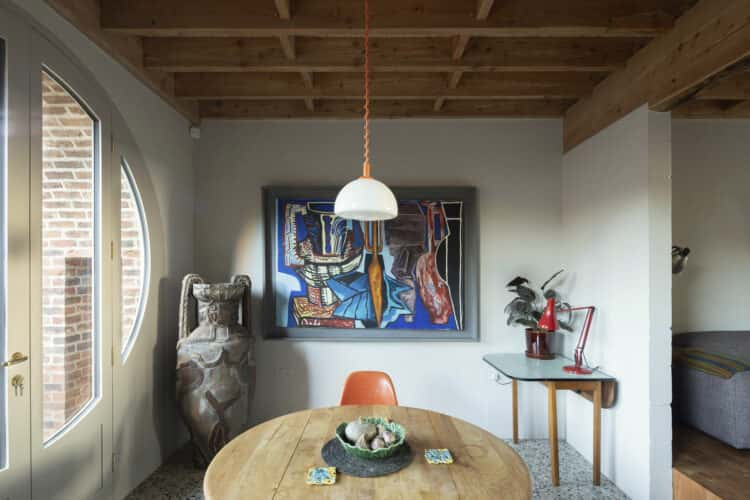
Surman Weston’s light-led creation of a family home in south London
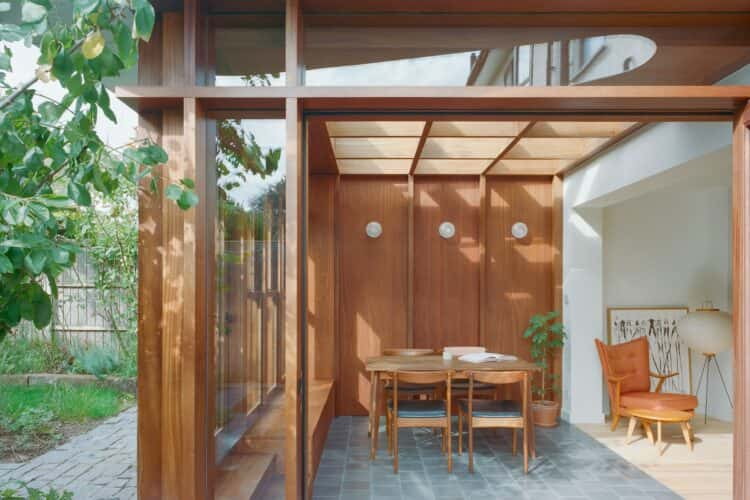
The brilliant reimagining of Sunny Side Up, a family home in Clapton
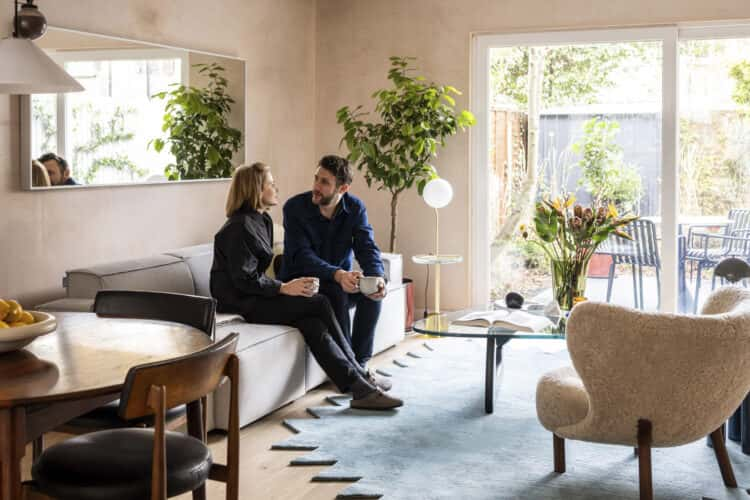
Life and love in a 1960s townhouse in north London

